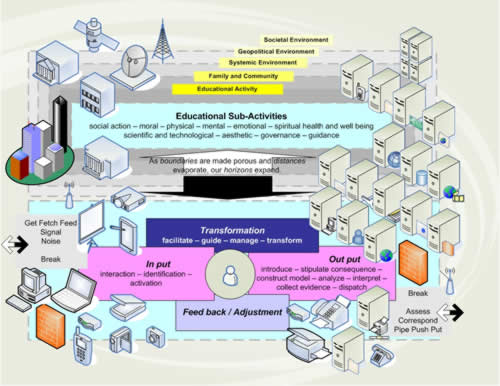We are discussing online identities and personal learning environments in the Introduction to Emerging Technologies course, offered by the University of Manitoba. I am taking in the full Emerging Technologies for Learning Program to stay current with the tools of my trade. This diagram was an attempt to encapsulate my virtual, personal learning environment. I wanted to keep some boundaries so I refrained from delving into the actual (as in contiguous) aspects of my life long learning, or I would never have finished the project. 😉
I used Visio2003 to create the interactive diagram. Interactive on my computer, that is. I liked the icon links to the object’s attributes (a catalogue of tools and their locations), the pan and zoom (for larger and more detailed diagrams) and the search functions. The diagram was compiled from a database of pre-existing shapes or stencils and while I did alter many, I also used a lot of them stock, right out of the can. Is it a mind mapping tool? Sure. Can I make it work on the Web? Only with IE, so far. Safari and Firefox display a link in the ToC frame, but none of the other widgets you see displayed in IE are loaded.
I amalgamated a number of schemes to put the diagram together. Models from which I extracted ideas include; the instructional systems design manual created by The Centre for Distance Education at Athabasca University, Bela Banathy’s, ” A Systems View of Education” (1992), The JISC cetis PLE Project report and Stephen Downes’ personal publishing and subscription model. Synthesizing them into a semblance of my order was a rewarding experience and well worth the undertaking.
